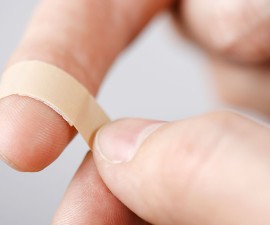… Continued …
In general, the faster abdominal aortic aneurysm (AAA) grows and the larger it is means the greater the risk of rupture.
Abdominal aorta, where AAA develops, is the lower part of the aorta. And because your aorta is the main supplier of blood in your body (it is the largest blood vessel that you have), ruptured AAA can cause a serious life-threatening bleeding. That’s why the effect can be so significant and should be treated immediately!
A ruptured aortic aneurysm or aortic dissection (tears in one or more layers of the aorta’s wall) is the main complication of AAA. The risk of blood clots is another complication. Small blood clots may occur in the area of where aortic aneurysm develops. This may block other blood vessels, causing pain or blocking the blood flow to particular areas of the body (such as abdominal organs, kidneys, legs, or toes).
When to see a doctor?
If you experience any symptom associated with AAA (see the previous page), see your doctor promptly! But if you have no symptoms and concern about your risk of AAA, you can consider taking a screening for the condition.
The screening is commonly recommended for older people, especially men over 65. It can also affect women, but it affects more men than women. If you have other risk factors (such as a smoker and having a family history of aneurysm), you may be recommended to take the screening earlier!
Abdominal ultrasound is one of the common procedures in screening for AAA. It can help show up whether or not you have aneurysm before it becomes advanced.
What else to do? The following lifestyle measures can help prevent aneurysm:
- Quit smoking as soon as possible (if you’re an active smoker)! It’s also important to avoid secondhand smoke.
- Eating right, especially diet low in fat!
- Do exercise moderately and regularly! Exercise is great way to boost your overall health, including for your heart and aorta!
- And keep your weight healthy! Excess weight you gain can put you at high risk of hypertension and make your heart work harder. And these things can pose to the risk of aortic aneurysm.
If you have AAA, the goal of the treatment is to keep if from rupturing. The treatment can vary, depending on a number of several factors (such as the condition and size of your aneurysm).
For instance, not all cases are treated with surgery. Even sometimes watchful waiting (a procedure of when no active treatment is necessary but the aneurysm is continuously monitored) may be suggested if your aneurysm is small, likely to grow slowly or even stay small.




